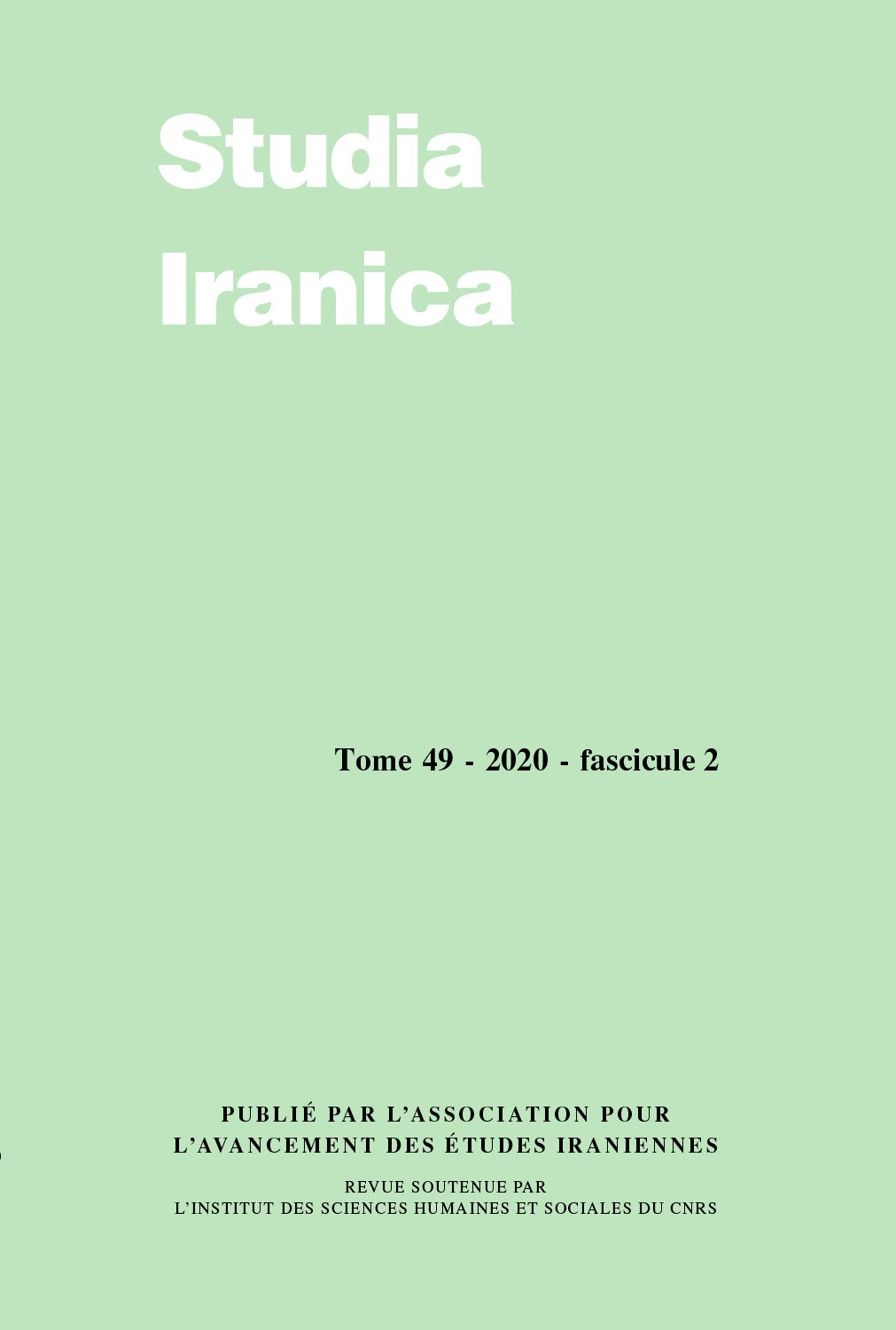 previous article in this issue previous article in this issue | next article in this issue  |

Preview first page |
Document Details : Title: Queen Esther in Judeo-Persian Garb Subtitle: Jewish, Muslim, or Persian Representations? Author(s): MOREEN, Vera B. Journal: Studia Iranica Volume: 36 Issue: 2 Date: 2007 Pages: 227-250 DOI: 10.2143/SI.36.2.2024098 Abstract : This study endeavors to examine the portrayal of the biblical Queen Esther primarily in Ardashīr-nāmah ['The book of Ardashīr' (Ahasueros)], a fourteenth-century Judeo-Persian epic by Mowlānā Shāhīn-i Shīrāzī. It focuses on the Jewish and Muslim/'Persian' aspects of the representation of the feminine and the manner in which these conceptions enhance the literary and dramatic features of the epic. While Shāhīn's work departs in significant details from biblical and rabbinic perceptions of Queen Esther in the spirit of Persian epic romances, its ethos is faithful to the idea of Jewish salvation in the national homeland. Based on little known Judeo-Persian manuscripts, this article is mostly comparative in nature addressing various visual (painterly) and spiritual (Jewish and Muslim [Sufi]) conceptions of the feminine representations of the Divine as these combine to great effectiveness in Shāhīn's epic. Cette étude s'attache à examiner le portrait de la Reine Esther biblique, notamment dans l'Ardashīr-nāmah ['Le Livre d'Ardashīr' (Ahasueros)], une épopée judéo-persane du XIVe s. par Mowlānā Shāhīn-i Shīrāzī. Il est centré sur les aspects juifs et musulmans/«persans» de la représentation du féminin, ainsi que sur la façon dont ces conceptions améliorent les valeurs littéraires et dramatiques de la narration épique. Même si l'ouvrage de shāhīn s'éloigne, dans les détails significatifs, des perceptions biblique et rabbinique de la Reine Esther pour suivre l'esprit des romans épiques persans, son ethos est fidèle à l'idée juive de la «salvation» dans la terre d'origine nationale. Basé sur de manuscrits judéo-persans peu connus, l'article est principalement de nature comparative, traitant de diverses conceptions visuelles (peinture) eet spirituelles (juifs et musulmans [soufis]) de la représentation féminine du Divin telles qu'elles se mélangent avec une grande efficacité dans l'épopée de Shāhīn. |
|


